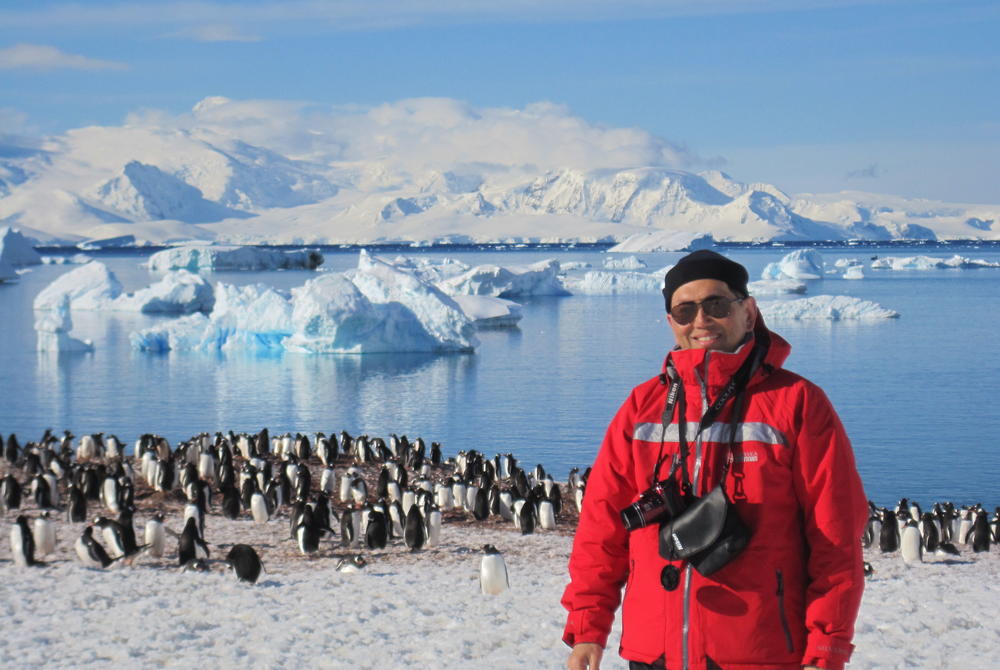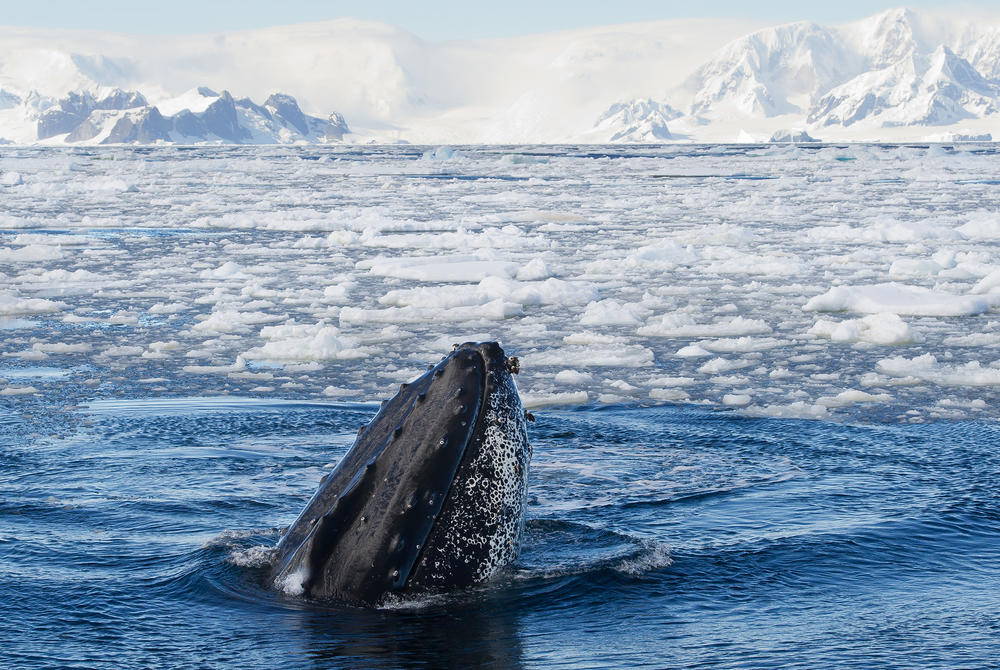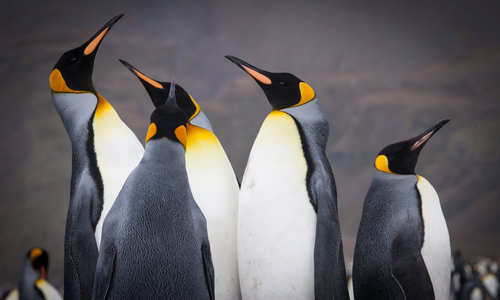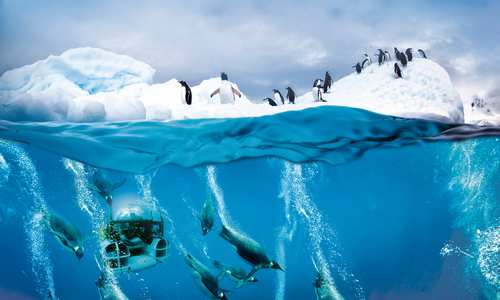Article content
5 February 2025 by Tim Tan
Some 40 years ago, Wexas honorary president Sir Ranulph Fiennes and Charles R. Burton were in the midst of the daring Transglobe Expedition, navigating the wilds of Antarctica unsupported. Once a destination for only the most seasoned of explorers, including Sir Ranulph himself, Antarctica is now more accessible than ever. Today, a journey to the ‘white continent’ can be done in serious style, but how much do you really know about this vast, wintery wilderness? We've put together the ultimate guide, covering everything from its most popular resident – the penguin – to its icy topography.
The icy wilds

Ellsworth Mountains, Antarctica
Antarctica is the driest continent on Earth – despite being home to about 70 percent of the planet's fresh water, and 90 percent of all freshwater ice – because of the lack of rain or snowfall. Katabatic winds across the high interior gain speeds of up to 200 mph, reaching hurricane levels, and there are no trees or shrubs. In fact, there are just two species of flowering plants, found only on its surrounding islands and on the Antarctic Peninsula. Yet, while the interior landmass is barren, its waters are rich in marine life, and the peninsula, extending towards South America, is a major breeding ground for seabirds, seals and penguins.
Native wildlife

Seals in Antarctica
While penguins and seals come to mind when you think of Antarctica, its most common land-based resident is the tiny nematode worm. Not only can this miniature creature lower its freezing point to survive the continent's sub-zero temperatures, but when conditions become too dry it enters a state of suspended animation, reviving itself months later once glacier melt provides enough moisture for it to function. It's not the nematode worm that most people come to see here however, and the region is home to no less than six species of seal, from the solitary Leopard and Ross seals, to the colonising elephant seals that bask in mass groups on the ice. You'll also find whales, although most are migratory, heading to warmer waters during the Antarctic winter. Overhead, you can spot soaring albatross, petrels, prions, fulmars and shearwaters, which nest among the scattered subantarctic islands and ice-free localities during the summer.
The mighty penguin
A guide to Antarctica wouldn't be complete without some handy penguin facts. Penguins are the most common birds in the Antarctic, and it's unsurprising that many consider them an unofficial mascot of the region. Penguin colonies, which are known as rookeries, can be vast – some with up to a million nesting pairs – occupying areas of exposed rock, beaches or tussock grass, with the exception of the emperor, which breeds on sea-ice. In fact, of the 17 existing species of penguin, only two, the emperor and Adélie, truly call Antarctica home, although others – chinstrap, macaroni and gentoo – do breed on the Antarctic Peninsula in milder conditions. These flightless birds are excellent divers, and their thick fat stores keep them warm in freezing conditions.
Antarctic cruises

Silversea expedition cruise to Antarctica
Unless you're embarking on a true expedition to the South Pole, most travel to Antarctica comes in the form of an experiential cruise. Antarctica is not an inhabited continent – the only people who "live" there are scientists rotating between small research outposts in the frozen wilderness, and there are no commercial hotels. Luxury cruise lines such as Silversea, Scenic, Swan Hellenic and Quark offer expeditions originating in Chile or Argentina, sailing (or flying) the Drake Passage and then exploring the more accessible waters of the Antarctic Peninsula, the exact route usually guided by the weather.
Immersive experiences
Silversea in Antarctica
The ships that sail the Antarctic waters are almost always equipped with Zodiac boats and kayaks, so that guests can venture up close to everything from packs of seals to gargantuan icebergs. Some, like the Scenic Eclipse, even have a helicopter and submarine on hand, for exploring the skies and seas in breathtaking style. And, most expedition liners also have a team of guides onboard, intimately familiar with the region and offering expert tours and even enrichment lectures to help you immerse yourself in all things Antarctica.
What to pack

Wexas specialist Tim Tan on the Antarctic Peninsula
It's important to ensure you have the appropriate clothing and equipment to make the most of your trip. Many expedition cruise lines provide some cold-weather gear, including protective parkas, but you should always check exactly what's provided before you go. You'll need knee-high waterproof boots, which are usually available from the ship, although they may need to be ordered in advance. You'll also need layers – a moisture-wicking base layer and an insulation layer underneath your parka and waterproof trousers. Don't forget a hat, gloves, and thermal socks, as well as a neck gaiter. Bring a pair of binoculars and a camera, for capturing those once-in-a-lifetime moments, and a waterproof bag to keep them in. Finally, don't forget your sunscreen – it might be freezing, but the UV rays are strong here, so you'll need lotion for your face, an SPF lip balm, and UV protection sunglasses.
Antarctic Packing List
- Waterproof boots
- Waterproof outer layers – trousers and jacket
- Thermal base layer
- Insulation layer
- Thermal socks, gloves, hat & neck gaiter
- Binoculars
- Camera
- Sun lotion & SPF lip balm
- UV protection sunglasses
When to travel

Humpback whale in Antarctica
The best time to visit Antarctica as a tourist is undoubtedly the summer – which in the Southern hemisphere equates to any time between November and early March. In fact, it's not possible to visit Antarctica the rest of the year, as during the colder months the blanket of sea ice prevents any ships from getting through. If you want to see the icebergs at their largest, travel early in the season, before they have diminished – although be aware that temperatures are still very cold in October and November. November and December offer a good chance of seeing newborn seal pups and penguins laying their eggs, and by January and February, 20-hour sunshine leaves temperatures hovering at just above freezing – eggs begin to hatch and you'll see fluffy penguin chicks playing on the ice. And, if it's whales you're seeking, the end of the season is the best time to go, even as late as March – and you'll find it quieter, with less boats. The worst of the Antarctic weather should be limited to the winter months, but if you do happen to experience harsh winds or conditions during your trip, the captains and Expedition Teams that sail in this region are extremely knowledgeable and will adapt your route to suit. Be prepared for itinerary changes, especially if you're travelling at either end of the season.
Environmental awareness

Emperor penguins in Antarctica
Antarctica has a fragile ecosystem, and due to increases in the planet's temperature, sea ice and glaciers in the polar regions are retreating. The impact of this is wide-ranging – from rising sea levels to loss of habitat for native wildlife. If you're travelling to Antarctica, it's important to bear a few things in mind. Choose to travel with operators listed by The International Association of Antarctic Tour Operators, which promotes safe, respectful travel in the region and strictly enforces codes of conduct to avoid causing any damage to the environment. And, while you're there, keep a few things in mind. Don't touch the animals, try to feed them or get too close. Don't take anything home or leave anything there – foreign plants or soil could have a lasting impact on the ecosystem, which is also why many ships provide special footwear for you to wear ashore. And, consider making a donation towards research in the region, as a legacy for your trip.




